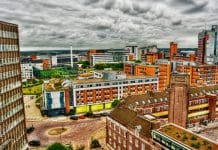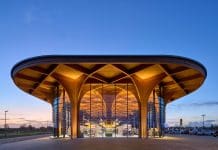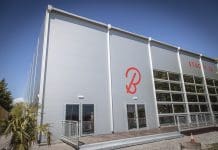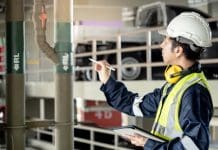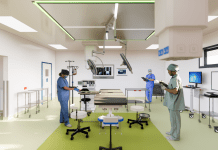Hire divisional director at Premier Modular, Mark Rooney, examines the need to incorporate repurposed building stock in the national net zero strategy
As the UK is now halfway to reaching its net zero target, reports suggest that emissions must be cut at double the speed if the country is to stay on track. A revived plan to temporarily decant the House of Lords during the refurbishment of the Palace of Westminster has shed light on a potential solution that could be echoed nationwide: could repurposed rental buildings be used to house Parliament and contribute to decarbonising the built environment?
Responsible for 25% of the national emissions generated, the built environment needs to be decarbonised quickly.
MMC principles will be fundamental to achieving net zero
Reusing existing rental building stock, a practice commonly undertaken in modern methods of construction (MMC), is one effective solution to lowering carbon which produces up to 70% less emissions than new construction.
Uptake in reused building solutions is growing in line with increasing recognition of the time and carbon savings the process affords. Across the MMC industry, it is standard practice to recycle the rental building fleet and only produce new units when required.
In modular construction, modular units are reused in their entirety, meaning new steel frames do not have to be manufactured – cutting out a hugely energy-intensive process entirely.
This additionally lends to a quicker project turnaround and enables organisations facing time constraints to meet demand at speed, be that easing patient capacity pressures in a busy hospital or accommodating students during the refurbishment of their permanent school building.
Typically, reusing existing stock follows a methodical procedure
Once the first hire period is complete, units are thoroughly sterilised and returned to a standard form.
For standard units with minimal customisation, the ‘strip out’ process is swift. Alongside the building shell itself, mechanical and electrical features, such as fire alarms or air conditioning systems, are salvaged and refurbished to a new condition, ready for reuse in future buildings. Every item in a building, including the units themselves, is identified with a legacy tag outlining its condition.
When a new order is received, this data informs the review of current fleet stock before modules are allocated for use in the new project.
For rental buildings that have been heavily customised, the strip out process is more intensive. Customer specific items that are commonly stripped from units include anything from bespoke windows and partitions to kitchens and tailored bracings. Where applicable, salvaged items are palletised and sent for refurbishment or repair. Once returned to a ‘fit-for-use’ condition, items are typically added to a second-hand inventory stock list, ready for reuse in future projects.
When refurbishing modular units, core elements, such as internal plasterboard ceilings, floors or guttering, that cannot be repaired to a high quality are replaced. In some cases, this occurs when customised elements cannot be restored to their standard form.
Unlocking a repurposed building’s versatility
Whilst the uptake of repurposed rental solutions is rising in sectors such as healthcare and education, there is plenty of scope for their use elsewhere. Units can be reused for almost any purpose; an office can become a classroom; a welfare facility can be turned into accommodation. With further uses including complex projects such as laboratories, hospitals and for commercial and industrial purposes, the possibilities when it comes to repurposing are plentiful.
If the UK’s net zero targets are to be reached, greater investment in repurposed rental building solutions is a must. Reusing buildings and internal features supports the circular economy by maximising the lifecycle of a product, limiting waste and reducing embodied carbon.
MMC has been a leading industry for sustainable materials
This goes hand in hand with the use of sustainable materials to produce rental units. For example, timber is often used to produce modular buildings due to its recyclability and large capacity for storing carbon that would otherwise be released into the atmosphere. Often, companies in the MMC industry procure timber certified by the Forest Stewardship Council (FSC) to ensure the forest is being managed in a way that conserves biological diversity, sustains economic viability and benefits local people and workers.
Plasterboard is another recyclable material widely used in the industry as a highly sustainable product. For insulation, rental units will often include glass mineral wool too. This product saves energy in manufacture and use, reducing heating and cooling requirements so efficiently that energy is actually saved in the material sourcing, manufacture, distribution and installation phases.
Buildings of any size, age and purpose can be renewed
Repurposed rental buildings offer organisations across sectors an opportunity to push their own sustainable business model and encourage a more circular supply chain to take shape. Once repurposed, units can be modified to meet new specifications to a standard that matches that of newly constructed counterparts and can even be scaled up and down or reconfigured after installation to meet new demands.
With endless means to implement repurposed buildings, a modular Parliament is within the realms of possibility. If the UK’s net zero trajectory is to be accelerated, a more reusable built environment will need to be established from the top down.




